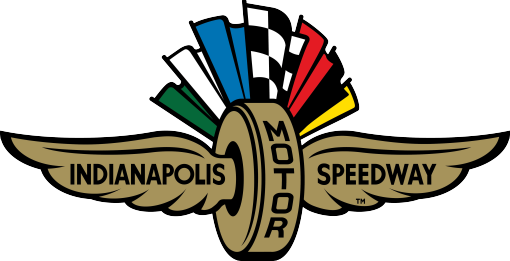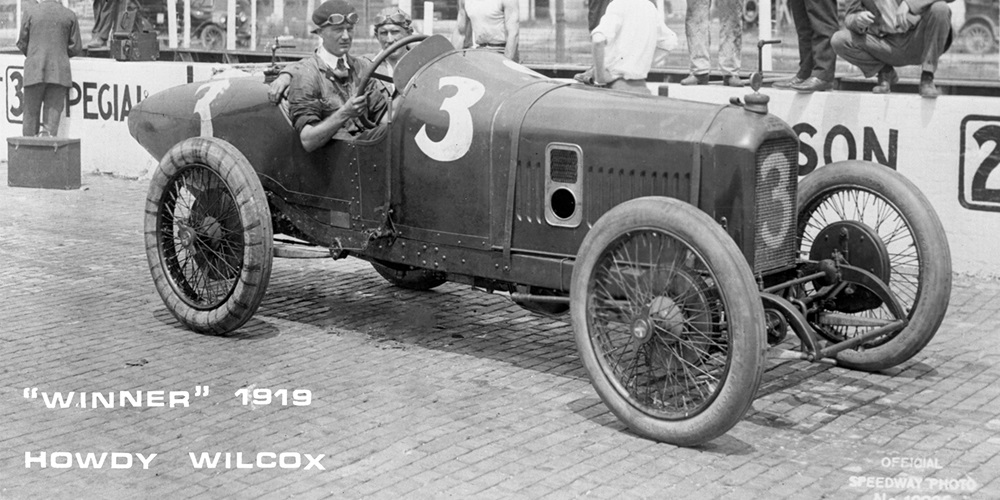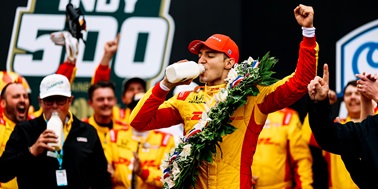This story features a compilation of anecdotes that explain how the Indianapolis Motor Speedway operated from the early years of World War I to the Speedway’s first race after the War in 1919.
1916
Dario Resta, driving a Peugeot, won the 1916 Indianapolis Classic, which, partially due to conservation efforts toward the war in Europe, was scheduled for only 300 miles instead of 500.
Many of the Europeans who had participated in 1913 and 1914 were already serving their countries, while several of the Americans would soon be joining them. The most notable of these was front-row starter and early race leader Eddie Rickenbacker, who at this time was still several months away from learning how to fly an aircraft.
Within two years, he would be hailed as America’s leading World War I flying “ace.” Not only that, but in a little over nine years’ time, he would be heading up the management team at the Indianapolis Motor Speedway.
1917-1918
Although an Indianapolis 500-mile race was planned for 1917, it was not officially announced until the early part of March. No sooner had it been so than track management was almost immediately obliged to cancel it due to the United States’ increasing involvement in World War I. The date on which the race was canceled was Friday, March 23.
During World War I, the facility was offered to the government as a part of the war effort. There were three aviation maintenance battalions that operated out of the infield. The infield became, among other things, a refueling point between military establishments in Dayton, Ohio and Rantoul, Illinois. In addition, several experimental aircraft were tested at the track, flown by leading test pilots of the day. There were also barracks that operated just a few blocks south on Main Street in the Town of Speedway.
1919
Upon the signing of the Armistice ending World War I on Nov. 11, 1918, plans to resurrect the “500” began in earnest. Rickenbacker returned to Indianapolis—not as a driver, but as a highly decorated war hero. His famed exploits as an ace pilot made Rickenbacker the perfect choice to help re-launch the race, dubbed for 1919 as "The Liberty Sweepstakes.”
It was a local victory of sorts, with the winning driver being the very popular Crawfordsville, Indiana, born Howdy Wilcox.
His mount may well have been a French Peugeot, but it was owned by Carl Fisher and Jim Allison, two of the Speedway’s four founding members, and it had been prepared only about four blocks south of the track’s main entrance in the building that was gaining considerable notoriety as Allison Engineering’s Plant One.
In fact, nine of the 33 starting cars were French, the tri-color’s 1914 “500” winner René Thomas returning from World War I action to sit on the pole with a record lap of 104.78 mph in one of four Ballots entered, while 1913 winner Jules Goux placed third as Wilcox’s teammate in a Speedway-owned Peugeot.
Runner up Eddie Hearne’s Durant Special was actually one of the 1915 Stutz entries, while his riding mechanic, Harry Hartz, was one of 11 in this event who would later drive in the “500,” including Duesenberg’s Jimmy Murphy, who was destined to beat Hartz for the win in 1922.
The event's triumphant return was highlighted by a series of historic “firsts.” For the first time, the race featured 33 starters—although this number would fluctuate in coming years and a 33-car field wouldn’t become status-quo until 1934. In qualifying, Wilcox became the first qualifier to officially break the 100 mph barrier, while Thomas would earn the pole with a qualifying speed of 104.780 mph.
For the first time in seven years, an American won the race when Wilcox took the checkered flag alongside riding mechanic Leo Banks. His victory resulted in one more first. As it became apparent the Indiana-born Wilcox would win, a local band fired up the hometown crowd by playing the song that became known as Back Home Again in Indiana. It wasn’t until 1946, however, that the playing of this song became (and remains) one of the most enduring traditions of Indianapolis 500 pre-race ceremonies.
On a much lighter note, drama unfolded in Victory Circle: Maurice Becker had been Howdy Wilcox’s riding mechanic all month, but his new wife forbade him from competing in the race. At the last minute, a very young man named Leo Banks was pressed into service. It was reported that Banks looked dazed in Victory Circle, wondering how he was going to explain his incredible adventure to his mother.





